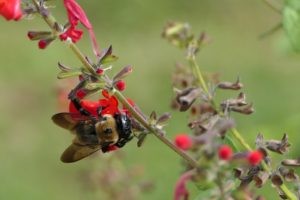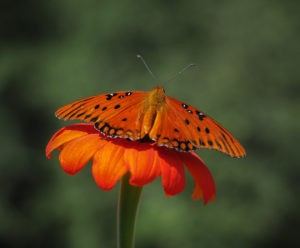The Flower Power of Pollinators
The secret message in the color of flowers
By Liz Platner, Outreach and Partnerships Coordinator
Originally Posted on March 23, 2018
Updated on June 12, 2020
 You may think that roses are red and violets are blue, but that’s because your eyes are human eyes. If you were a pollinator, you would see there’s a secret message in the colors of flowers. To understand why flowers contain secret messages, we need to understand pollination.
You may think that roses are red and violets are blue, but that’s because your eyes are human eyes. If you were a pollinator, you would see there’s a secret message in the colors of flowers. To understand why flowers contain secret messages, we need to understand pollination.
Flowers have male parts called stamens, which are the long thin filaments topped with the anther that produces pollen. In order to create seeds, the pollen must be transferred to the sticky stigma which is at the top of the female pistil. Once the pollen grains are on the stigma, pollen tubes can grow down into the ovule and a seed is created. These seeds can grow into new plants, or, in some cases, the ovule develops into fruit and we get to eat it. This explains why flowers are critical to the survival of many plant species.
Wind and insects, especially bees, flies and beetles, are the primary pollinators and there a few other kinds of animals as well. Pollination can occur by water, but it is very rare. Since it’s so important to plant survival, some flowers have embedded color patterns to help pollinators find their nectar more easily. As the pollinators feed on nectar, they get pollen grains stuck on them, which they then transfer to the next flower. These color patterns are called nectar guides, and they benefit the plant by facilitating cross-pollination.

Some of these nectar guides are made of colors in the ultraviolet range, not visible to the human eye but obvious to insects. Our eyes can see colors from red to violet wavelengths of light. Insects such as bees can’t see as many colors, but they can see orange through violet, plus ultraviolet wavelengths of light.
So next time you look at a sunflower or a pansy, know that there are hidden messages for pollinators right in front of your eyes.
